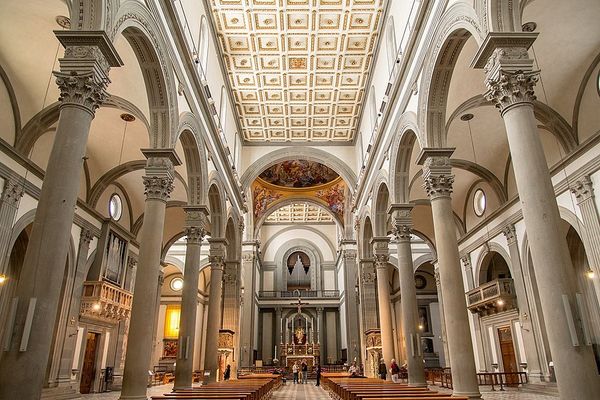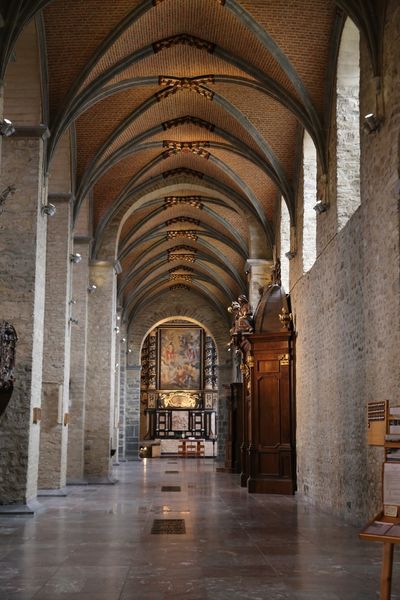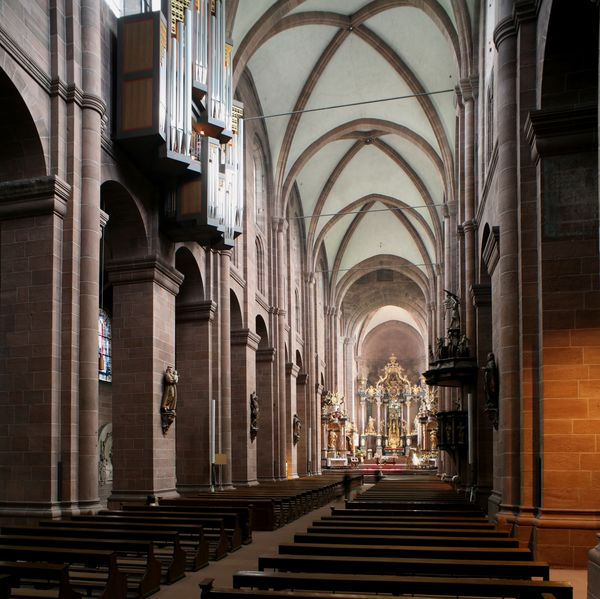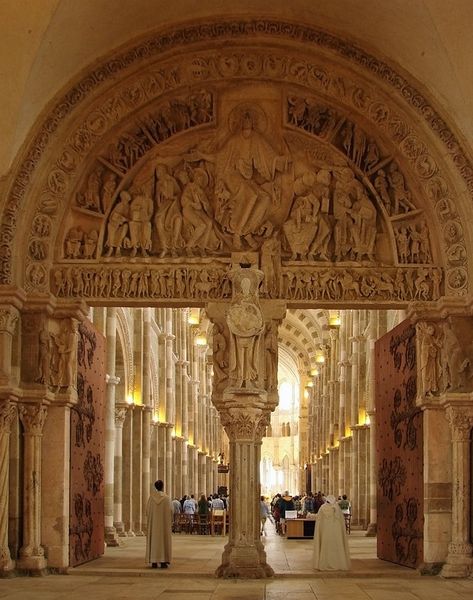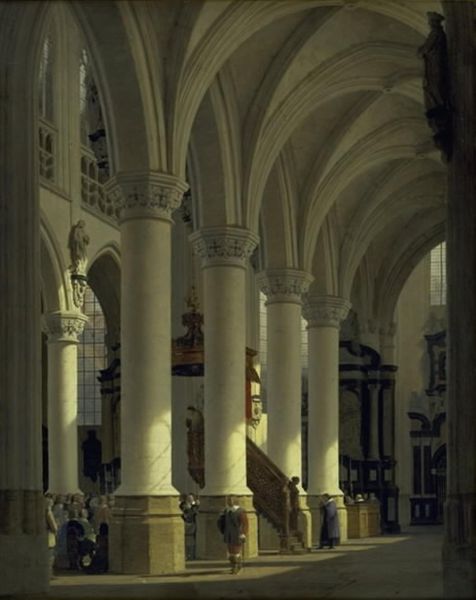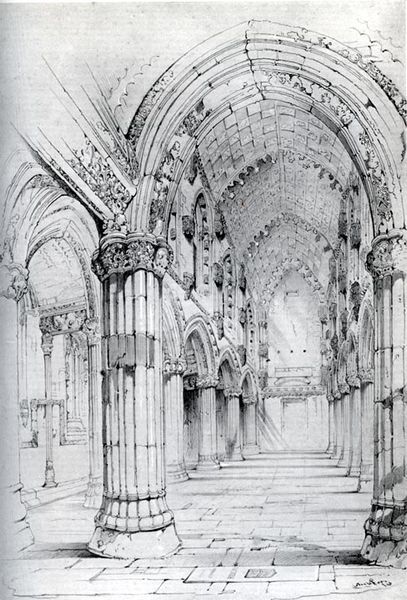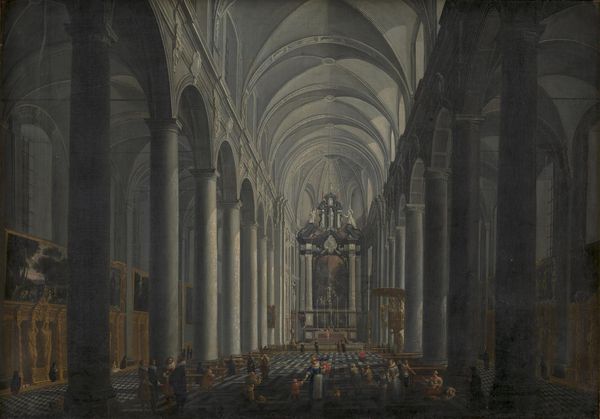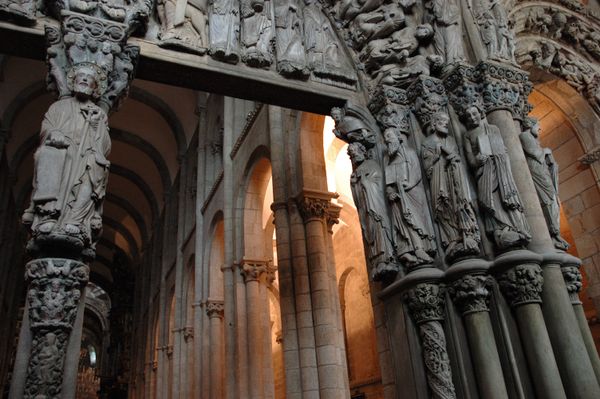
marble, architecture
#
medieval
#
historic architecture
#
traditional architecture
#
romanesque
#
arch
#
marble
#
architecture
Copyright: Public domain
The interior of Santiago de Compostela Cathedral in Spain was built with stone according to Romanesque architectural principles between roughly 1075 and 1211. Its design emphasizes the church as a communal and institutional space. The long, narrow nave directs the eye and the body towards the altar, centralizing ritual authority. The rows of columns and arches create a sense of rhythmic regularity and shared purpose, reinforcing the social cohesion of the congregation. Built during a period of pilgrimage and religious fervor, the cathedral served not only as a place of worship but also as a destination for travelers seeking spiritual solace and a symbol of Christian power in the Iberian Peninsula. To understand the cathedral's meaning more deeply, we can turn to historical archives, architectural treatises, and religious texts. This will reveal more about the complex interplay of faith, power, and artistic expression in medieval society.
Comments
No comments
Be the first to comment and join the conversation on the ultimate creative platform.
